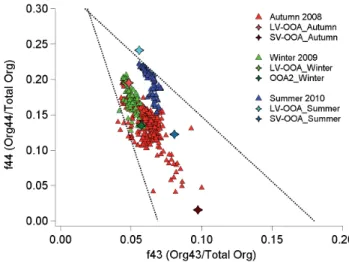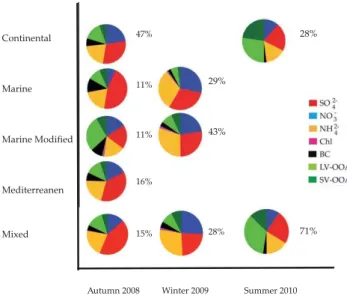Seasonal variations in aerosol particle composition at the puy-de-Dôme research station in France
Texto
Imagem




Documentos relacionados
M.: In situ vertical profiles of aerosol extinction, mass, and composition over the southeast United States during SENEX and SEAC 4 RS: observations of a modest aerosol
They then quan- tified the gas-particle partitioning equilibrium of these products using estimated satu- ration vapour pressures of the oxidation products and assuming that
Our results show that particle mass production in an outflow plume is a robust feature of our model. The production is largely insensitive to reasonable variations in the seed
Measurements of aerosol chemical composition and aerosol optical depth in the Nepal Himalaya have clearly shown the build up of aerosols in the pre-monsoon season during the winter
The data for the MASS1 upleg on 3 August 2007 into NLC and PMSE indicate that the smaller aerosol particles (0.5–1. nm and 1–2 nm) are predominately positively charged and that
(2011) found that organic aerosol particles measured at the PUY site during summer 2010 were likely linked to biogenic sources: the mass spectra of OOA (oxygenated organic aerosols)
We report first results obtained from chamber produced secondary organic aerosol (SOA) from ozonolysis of isoprenoids and from ambient aerosol as measured during the
L.: Mexico City aerosol analysis during MILAGRO using high resolution aerosol mass spectrometry at the urban supersite (T0) – Part 1: Fine particle composition and organic

